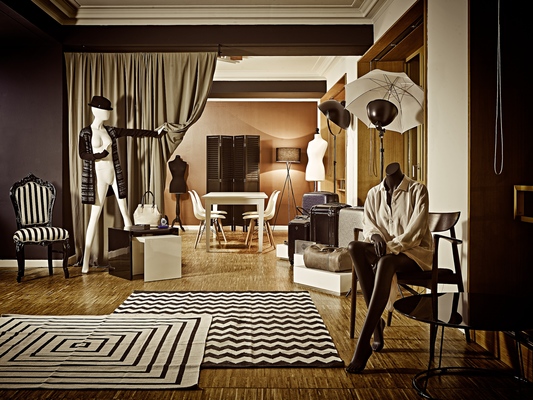Showrooms, which work as a retail space for brands to display selected products, have become far more visual and interactive over recent years. Mulberry‘s SS15 collection was presented against a backdrop of British blooms and in BMW‘s Abu Dhabi showroom, there‘s a café, a Formula One racing simulator and a children‘s play area.
But bricks-and-mortar stores are adopting retail theatre and becoming increasingly creative with merchandising, all while consumers shift towards online spending. This this has turned the physical store into a showroom in its own right, where customers can touch and feel a product, before jumping online to research the best price and purchase at their convenience.
It‘s widely believed that this is something of a trend, and that a growing number of British shoppers first browse in-store before heading online to buy – otherwise known as ‘showrooming‘.
According to EE, half of British consumers regularly practice ‘showrooming‘, using mobile devices to check for the best prices in-store.
Findings from the mobile operator also show that consumers feel let down by limited product availability in shops, as 77% of people prefer to browse products ranges online rather than in retailers‘ physical stores.
Demographically, EE found that the practice is most popular with younger consumers (53% of 18 to 34 year olds said they showroom while out shopping), but it needn‘t be a boogeyman for retailers as Jeremy Spencer, Head of Propositions at EE explains:
“Our research shows the practice of showrooming isn‘t going away, but it also presents a significant opportunity for retailers. John Lewis has turned the trend to its advantage, introducing free Wi-Fi access throughout its stores and allowing customers to research products, compare details and check reviews as they walk through a store. By doing this, John Lewis is building loyalty with its customers so they‘re more likely to buy from them, whether in-store or online. As a result, last year more than 50% of the retailer‘s web traffic came from smartphones and tablets.”
Shopping patterns vary across sectors. PayPal and Ipsos recently asked customers in the UK, and 21 other countries, about their purchasing habits in six shopping sectors, 46% of those surveyed prefer to browse and buy beauty products in-store, 37% using this method for DIY items and 44% buying clothes this way.
In contrast, half of British shoppers prefer to browse and shop online when buying consumer electronics, while 60% use this method to purchase educational and entertainment products. Finally, 39% head online to browse and buy furniture.
So what‘s keeping shoppers from buying everything online? The major barrier according to PayPal is shipping costs – with 40% of British shoppers believing free shipping to be a “must-have”, and 48% citing free return shipping as essential to online shopping.
Despite this, mobile shopping is really taking off in Britain and this is the future of shopping in the UK.
Naturally EE believes in the power of mobile. As does PayPal, which helps make mobile payments happen and handled $46bn in mobile payment volume in 2014 (a 68% increase on 2013).


















